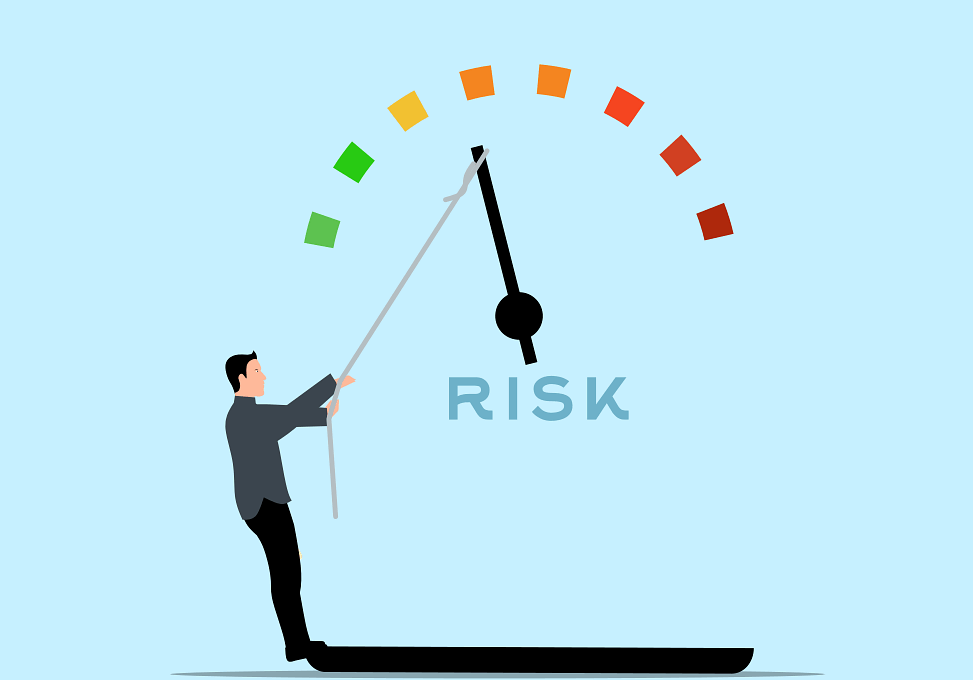Key Techniques for Effective Risk Assessment in Finance
Effective risk assessment is essential in finance, particularly as the market environment changes constantly. Financial modeling facilitates this process by incorporating various techniques to analyze potential risks. At the core of these techniques lies the need to gather accurate data from credible sources. The financial analyst must utilize both quantitative and qualitative data to assess risks accurately. Quantitative data includes historical price movements, volatility measures, and macroeconomic indicators. Qualitative aspects encompass management quality, industry reputations, and external factors that could affect performance. By marrying these methods, analysts can better foresee potential issues. Moreover, it is crucial to continuously review and adapt models in light of new information. This leads to more robust decision-making processes and enhanced forecasting accuracy. Furthermore, employing scenario analysis can help identify extreme outcomes and their probabilities, allowing for better preparation. Sensitivity analysis, on the other hand, offers insights into how changes in inputs can drastically shift outcomes. So, developing a comprehensive risk management framework becomes imperative for any diligent financial professional to ensure sound investment decisions.
One fundamental technique in effective risk assessment is Monte Carlo simulation, which enables analysts to model complex scenarios with uncertainty. Through random sampling, this method generates multiple potential outcomes based on varying input parameters, allowing financial analysts to evaluate risks associated with investment choices. This approach enhances the understanding of the probability and impact of unfavorable situations. Additionally, the output provides ranges rather than fixed forecasts, allowing stakeholders to make more informed choices. However, values derived from Monte Carlo simulations are only as good as the assumptions made in setting the model. Therefore, carefully considering historical trends and current market conditions is essential for increasing reliability. Incorporating Monte Carlo simulation into financial modeling can offer insights into worst-case and best-case scenarios, proving invaluable for risk management. It is widely used in portfolio optimization and capital reserve estimation, fundamentally influencing decision-making processes. Moreover, coupling Monte Carlo simulations with sensitivity analysis deepens the evaluation, allowing for better financial planning strategies. By understanding how variables interact, stakeholders can better assess the risks associated with potential investments, fostering more strategic financial management practices.
Utilizing Value at Risk (VaR)
Another vital technique in risk assessment is Value at Risk (VaR), a standard metric that quantifies the potential loss in value of an asset or portfolio over a given timeframe for a specified confidence interval. VaR simplifies the communication of risk to stakeholders by providing a single number that encapsulates possible future losses. This quantification is essential for risk managers in understanding how much capital reserves may need to mitigate potential losses. Various methods estimate VaR, including parametric, historical, and Monte Carlo simulations. The approach chosen largely depends on data availability and the specific requirements of the financial institution. A critical advantage of VaR is its ability to provide a snapshot of the risk level at a specific point in time, enabling traders to make prompt decisions. However, while VaR is beneficial, it comes with limitations, such as failing to capture extreme market movements properly. Therefore, combining VaR with stress testing and scenario analysis provides a more comprehensive risk assessment framework. This multifaceted approach enables finance professionals to gauge the efficacy of strategies under various market conditions, increasing overall risk awareness.
Stress testing forms another key pillar in effective risk management processes. It involves simulating the potential impact of extreme market conditions on an investment portfolio. Stress tests can focus on specific events, such as economic downturns or geopolitical conflicts, making it easier to identify vulnerabilities within a portfolio structure. By systematically analyzing how investments respond under distress scenarios, financial analysts can better prepare for future uncertainties. Furthermore, stress testing allows financial institutions to assess their capital adequacy in the face of adverse developments, thereby ensuring compliance with regulatory requirements. It can also highlight the correlation between various assets, revealing how interconnected investments may compound risks. Moreover, this approach reinforces the necessity for financial professionals to remain adaptable, revisiting and updating their models as new data emerges. Numerous regulatory bodies, such as the Basel Committee on Banking Supervision, emphasize the importance of regularly conducted stress tests to evaluate systemic risks. Consequently, establishing robust stress-testing procedures creates a safer financial environment, better emphasizing responsive management toward emerging threats and future challenges.
Incorporating Risk Metrics into Decision Making
Incorporating risk metrics into financial decision-making is crucial in ensuring successful outcomes. Effective risk assessment does not stop with modeling techniques; it extends into implementing robust metrics in evaluating and monitoring investments. These frameworks turn theoretical insights into actionable strategies. Commonly utilized key performance indicators (KPIs) encompass Sharpe Ratio, Treynor Ratio, and Jensen’s Alpha. Each of these metrics assists in quantifying the risk-return tradeoff associated with various investments. Furthermore, consistently applying these indicators allows financial professionals to optimize portfolios, aligning investment choices with individual risk tolerance. Investing without considering risk metrics often leads to unfavorable outcomes and can undermine overall performance. Therefore, fostering a risk-aware culture is essential, extending beyond quantitative measures. It requires communication between departments, creating holistic awareness throughout the organization. Stakeholders should be educated on interpreting risk indicators effectively. In this context, using visual tools such as dashboards and analytics software helps manage risks. Thus, creating an environment focused on risk management ultimately drives informed decision-making processes while enhancing long-term business sustainability.
Moreover, engaging in ongoing risk calibration enhances the effectiveness of financial models and assessment techniques. This involves the continuous evaluation of models against actual performance, making necessary adjustments to improve predictive accuracy. Regular calibration ensures that risk assessments remain relevant and reflective of dynamic market conditions. Professionals must understand that market environments fluctuate; therefore, reliance on outdated models can lead to erroneous conclusions. Embracing advancements in technology and data analytics facilitates the calibration process, enabling streamlined data collection and analysis. By leveraging tools such as artificial intelligence and machine learning, financial analysts can analyze vast volumes of data and trends more effectively. Such measures allow for real-time insights that complement traditional models, enhancing overall forecasting capabilities. The integration of cutting-edge technologies fosters agility, enabling firms to respond positively to emerging threats swiftly. By embracing continuous risk calibration, financial institutions not only enhance their decision-making frameworks but also build resilience against unforeseen market challenges. Establishing this practice as an integral part of risk management ensures long-term organizational success and sustainability in a rapidly changing financial landscape.
The Importance of Qualitative Assessment
While quantitative techniques dominate traditional finance, emphasizing qualitative risk assessment equally bolsters the framework for comprehensive risk management. Identifying aspects such as company culture, management demeanor, and ethical standards provides valuable insights beyond numerical data. It is critical to understand how these qualitative factors can impact financial performance and risk exposure. For instance, changes in leadership or strategic direction can have profound effects, influencing stakeholder perceptions and market behaviors. Qualitative analysis also captures potential reputational risks, which might not be apparent through quantitative models. Therefore, integrating qualitative assessments enhances the depth and breadth of risk evaluations. Furthermore, financial analysts should engage in open dialogue with other departments, collaborating on qualitative insights that can improve financial modeling. Workshops or brainstorming sessions can invigorate discussions, leading to better understanding and holistic perspectives on risk. As financial markets grow more complex, effective stakeholders must recognize the significance of qualitative analysis alongside quantitative metrics. The pursuit of a balanced risk management strategy will ultimately facilitate a greater understanding of the multifaceted dynamics at play, enriching decision-making processes.
Lastly, fostering a culture of risk awareness within an organization is a significant aspect of effective risk assessment. A profound understanding of risk across all levels of a company empowers employees to make informed decisions. Incorporating risk awareness into training programs enhances the overall effectiveness of risk management strategies. By embedding these concepts in the organizational framework, businesses can create a proactive environment where employees identify potential risks before they escalate. Leadership must also model this commitment to risk awareness, reinforcing the importance of adherence to established protocols. Frequent communication about the risks the organization faces strengthens employees’ understanding and engagement. Furthermore, adopting a comprehensive approach to risk can improve transparency and accountability, promoting ethical decision-making practices throughout the company. Encouraging dialogue about risk fosters collaboration, resulting in shared responsibility. By nurturing a risk-aware culture, organizations can better navigate challenges posed by an increasingly volatile and complex financial landscape. Through collective efforts, companies improve resilience, facilitating sustained growth and success while navigating potential pitfalls simply and efficiently.


